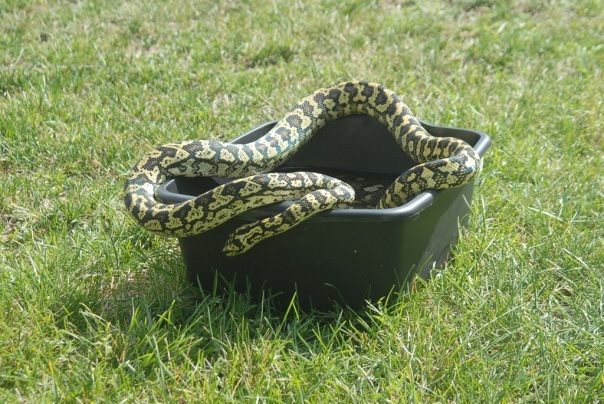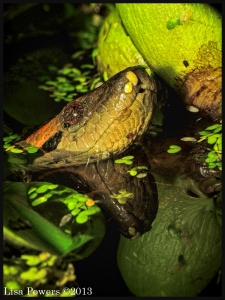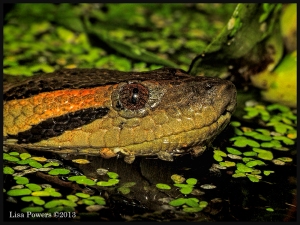Monthly Archives: August 2013
Announcing Baby Snake Month in September
It is baby snake season – yes that is right: Baby snake season. What does that really mean? It means a lot to a herpetologist but it also should mean a lot to all humans.
To a herpetologist, baby snake season means we are about to find a lot more snakes. We understand that the snake population is going to grow and the baby snakes are going to move around a lot and be easier to find. Unfortunately it also means we will be finding a lot more road killed snakes which is depressing for someone who loves and appreciates these amazing predators.
To other people, baby snake season should be a season of learning and amazement. It is a time when they can find and observe snakes relatively easily. Other times of the year snakes can be almost impossible to find. Not during baby snake season though. Plus baby snakes are tiny and cute (I hardly ever say a snake is cute but if I had to admit it I would). Baby snake season is a perfect time to learn to love and appreciate baby snakes.
September is going to be Baby Snake Month at the Center for Snake Conservation. We are going to bring you lots of baby snakes and tell you about them, where they live, what they eat, and what they become as adults. It is going to be an exciting month so be sure to subscribe to SnakeTalk or like our Facebook page to see them all.
Cameron
Center for Snake Conservation
Baby Yellow-bellied Racer – Coluber constrictor flaviventris
Baby Prairie Rattlesnake – Crotalus viridis
Carpet pythons exercising outdoors
A pair of carpet pythons outside for some sun, exercise, and enrichment. This pair are crowd favorites at our presentations with their color, feel, strength, beauty, and size. These are also out favorites because of their good nature and inquisitive personalities. Carpet pythons are from Australia and typically range from 5-10 feet long depending on the variety.
Cameron
Center for Snake Conservation
What does it mean to be a Center for Snake Conservation Member?
Do you want to make a difference for snakes but just aren’t sure how? By joining the Center for Conservation as a member, you will be a part of an amazing group of people dedicated to changing human perceptions about snakes through education, conservation, and science programs across the world. Click on the image below to join today!
When you join the Center for Snake Conservation, you are joining a community of people who care about snakes and much more. You are supporting a 501(c)(3) non-profit organization which relies on donations to make its programs happen.
In addition, there are many ways a member can get involved in what we do and help with our programs. Just this year, we have had members join us in our field efforts in Colorado, New Mexico, and Florida. Members also conducted a snake perception survey at the Claxton Wildlife Festival which used to be a rattlesnake roundup. Our members are an integral part of our Snake Count contributing both time and expertise in helping get folks out to observe snakes. Colorado members also are very involved in our education programs with many becoming presenters themselves (this is local in Colorado right now but we hope to expand this across the US in 2014). Member across the world also help generate the content that you read on our Facebook page by providing photos and stories.
As we grow, so do our membership programs which is leading to success in changing human perceptions about snakes. Together, we can affect change so that snakes, other wildlife, and people can all thrive in our world. Through our memberships, the Center for Snake Conservation will make a difference.
Become a Member – Join Today
Do you want to make a difference for snakes but just aren’t sure how? By joining the Center for Conservation as a member, you will be a part of an amazing group of people dedicated to changing human perceptions about snakes through education, conservation, and science programs across the world. Click on the image below to join today!
Amazon Tree Boa – Sleeping Beauty
As I was walking out the door this morning as the very early hour of 5:45am, I quickly check the snakes to make sure everyone was okay and did not need anything. Our Amazon Tree Boa was sleeping perched high in her inclosure and screamed “take my picture”. I titled this horrible cell phone photo “sleeping beauty” because this snake while dull yellow and an unpredictable attitude is just that – a sleeping beauty.
Cameron
Center for Snake Conservation
The Amazon Tree Boa is a fairly commonly found serpent in the Amazon Basin of South America. Although it can be active during the day, they are primarily nocturnal. Adults are usually less than 6 feet long. They are often found at night in trees where they mostly feed on rodents. They come in multiple patterns and color phases, including red, yellow, brown, or gray.
Anaconda Jewel
What do you get when you take 1 black cement mixing tub, a bunch of water hyacinths and duckweed, 2 geeky snake lovers and the word’s largest snake? A fabulous photo shoot of course! Fortunately since there were just the 2 of us, this green anaconda was a young one and only about 3 feet long. She was very strong even at this young size! But she could not have been any more pleasant to work with. She was very sweet, calm and gentle and seemed to enjoy the photo shoot while exploring the set!
CSC-Project NOAH Update
It always surprises me when one of my non-snake loving friends sees a photo like the western coachwhip tail pictured above and says, “Wow, that is so cool. You always make snakes look so beautiful.” All I have done is capture the beauty of the animal as I see it. Snakes are truly creatures of great beauty yet when we always post photos of them in defensive positions, all people think of is fear. Consider this a challenge to put more art in your snake photos!
This week finds our Project Noah-CSC SNakes of the United States mission at 2478 spottings.. We now have 958 PN users, an addition of 19 new members.
Our spotting of the week is this gorgeous Speckled Rattlesnake by member TorreyNeel
Short-tailed Snake – Lampropeltis extenuata
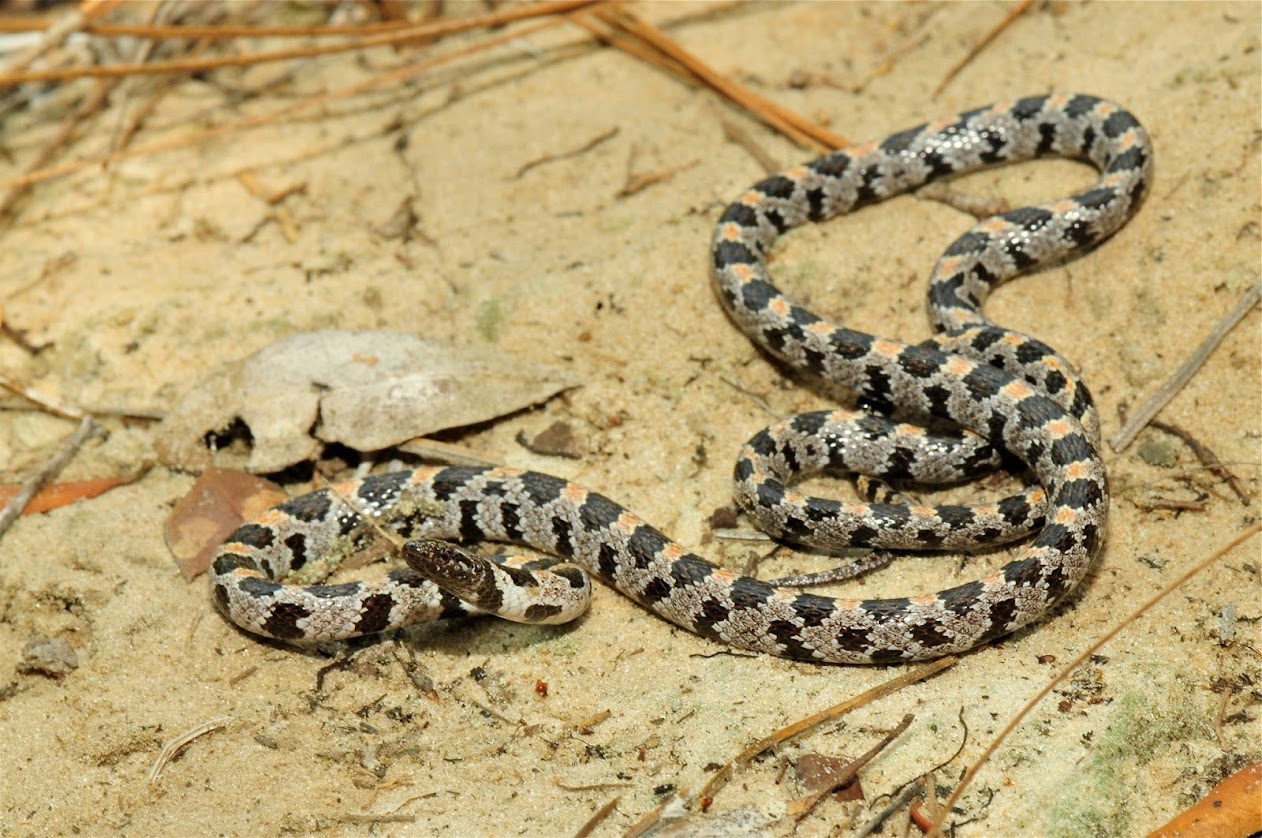
Short-tailed Snake – Lampropeltis extenuata
The short-tailed snake is a harmless kingsnake that is endemic to Florida and only eats other snakes of the genus Tantilla. Very little is known about this snake except that its habitat is disappearing fast! They occur in the sandhills of Florida which unfortunately is exactly where humans like to put houses and shopping centers. The short-tailed snake pictured above is an anerythristic individual so it does not have the orange blotches that these snakes typically can have.
Check out the photos on the Florida Museum of Natural History website for photos of more typical short-tailed snakes (http://www.flmnh.ufl.edu/herpetology/fl-guide/lampropeltisextenuata.htm). A neat snake that the Center for Snake Conservation will continue to watch out for as we do not know much about it or its conservation needs.
Photo by Zack West.
Conservation Through Education
Western Coachwhip – Coluber flagellum testaceus

Western Coachwhip – Coluber flagellum testaceus
The Western Coachwhip is a large (can grow to over 7 feet long), slender snake with a great personality. Yes, this species definitely has character! Coachwhips are diurnal snakes and show signs of high intelligence. This species has been known to follow humans through the habitat watching for any small lizard, insect, or mammal to be flushed as an easy meal. When pursued, coachwhips will climb the nearest bush, shrub, or tree and then face their attacker–striking at their attacker’s face to defend themselves.
Western coachwhips can be red, pink, brown, or grey. Overall, they are extremely pretty.
Photo by Ashley Tubbs.
Conservation Through Education
Prairie Kingsnake – Lampropeltis calligaster calligaster
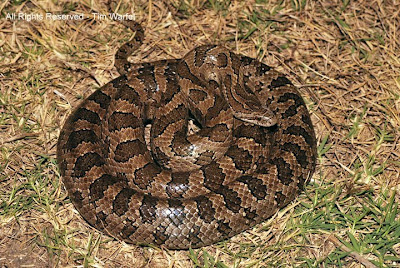
Prairie Kingsnake – Lampropeltis calligaster calligaster
The prairie kingsnake is a small gray or light brown snake that inhabits open grasslands or woodland edges. They mainly eat rodents but are known to eat frogs, lizards, and even other snakes. Prairie kingsnakes occur from Indiana west to Nebraska extending south into Texas and Louisiana in the western parts of their range.
Photo by Tim Warfel.
Conservation Through Education



